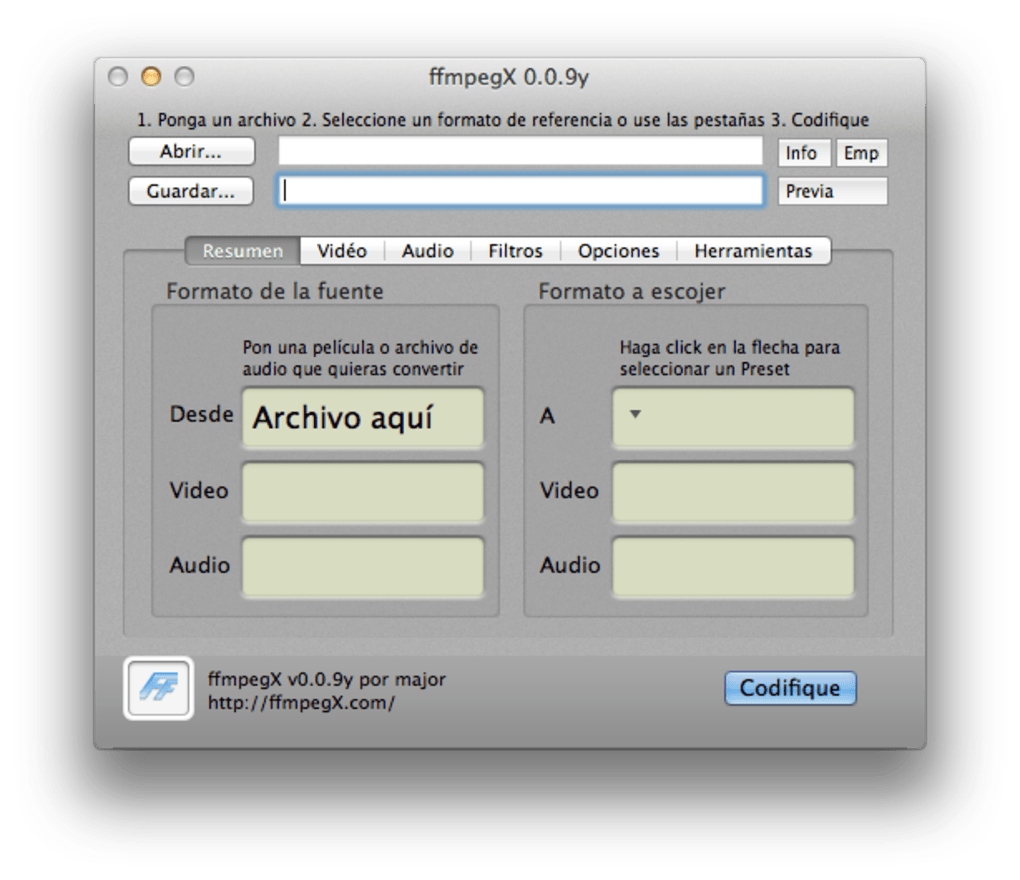



The codec « msmpegv4✺lso applies to the format. the parameter -i is to enter the file to encode, -vcodec is used to indicate a video codec, with -sameq we indicate that you keep the same quality, and finally we write the name of the final file. For example: uterineįfmpeg -i temp.VOB -vcodec libxvid -sameq nombre.aviįfmpeg -i temp.VOB -vcodec msmpegv4 -sameq nombre.mp4
#Ffmpegx vob code
When that's done, it just remains code the final file with ffmpeg. So the final file also has the extension. For example:Ĭat VTS_01_1.VOB VTS_01_2.VOB VTS_01_3.VOB VTS_01_4.VOB > temp.VOB VOB format is a subset of mpeg, so you should be able to combine the VOBs you want to read in just as you would mpeg data: by concatenating them together. Heres my command line: ffmpeg -r 23.976 -f h264 -i video.h264 -f ac3 -i audio.ac3 -vcodec copy -acodec copy -f vob output.vob And heres what ffmpeg comes back with: FFmpeg version SVN-r11143, Copyright (c) 2000-2007 Fabrice Bellard, et al.

For a lossless re-mux you should just re-mux, better to specify both video and audio: ffmpeg -i VTS011.VOB -c:v copy -c:a copy -bsf:v h264mp4toannexb -f mpegts intermediate1. It is important that the file « temp»Has the same extension as the other files. 2 Answers Sorted by: 2 In the first step you are doing a lossy conversion, you transcode from vob to mp4, and then to ts. Pluses: it has a great support for various file types, it is quite easy to use while it manages to provide advanced functionality, it includes a set of tools that extends the trans-coding functionality.
#Ffmpegx vob for mac os
Where says " partX.extension«, Place the name and extension of each of the parts, then those parts are copied to a single file called temp. ffmpegx vob for mac os In conclusion: this is one of the best video encoders for Mac OS X. Now we open a terminal in the folder where the pieces of the film are, and we execute this command:Ĭat parte1.extensión parte2.extensión. Includes a full-featured universal video player (mplayer) supporting VOB and text subtitles, with choice of. So first I found this (example assumes 2 VOB files) from an old non-stack exchange post, and it works. Queue encodings in the ffmpegX Progress window. I wondered if I could use FFMPEG to combine them into a single MPEG files.
#Ffmpegx vob series
The next thing is to give him permission to Reading and writing to those files, to delete them later. 2 I have a library of decrypted DVDs, which all have their video in a series of VOB files within the usual VIDEOTS folder. The directory, name and format of the videos may vary.


 0 kommentar(er)
0 kommentar(er)
